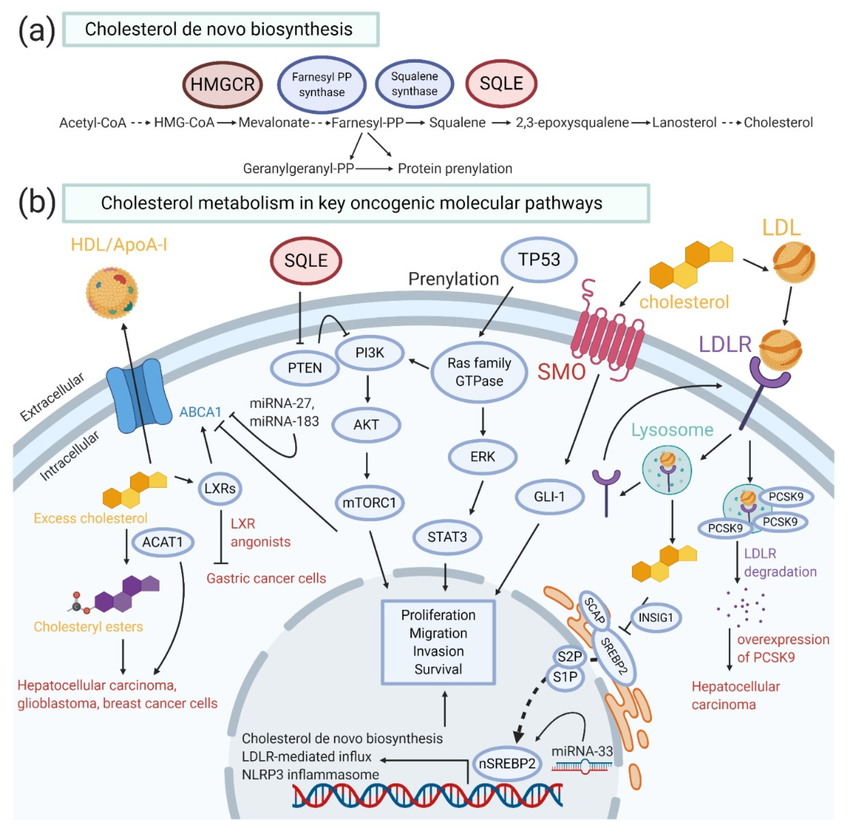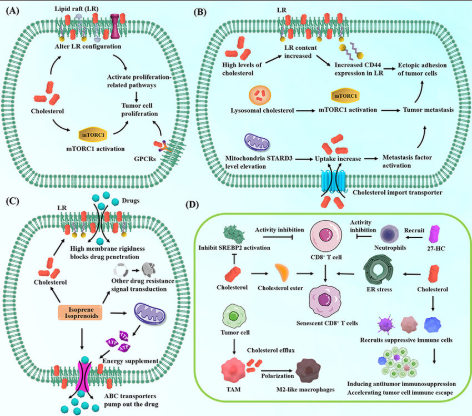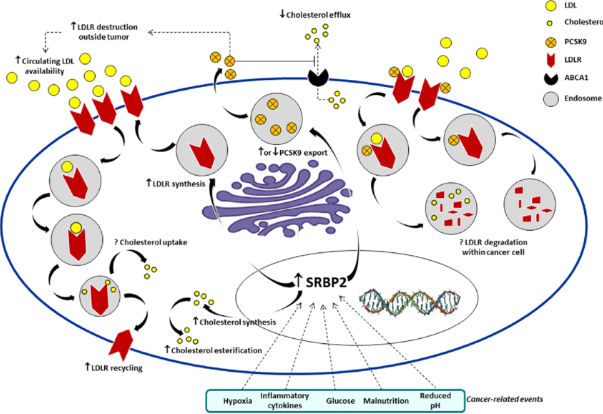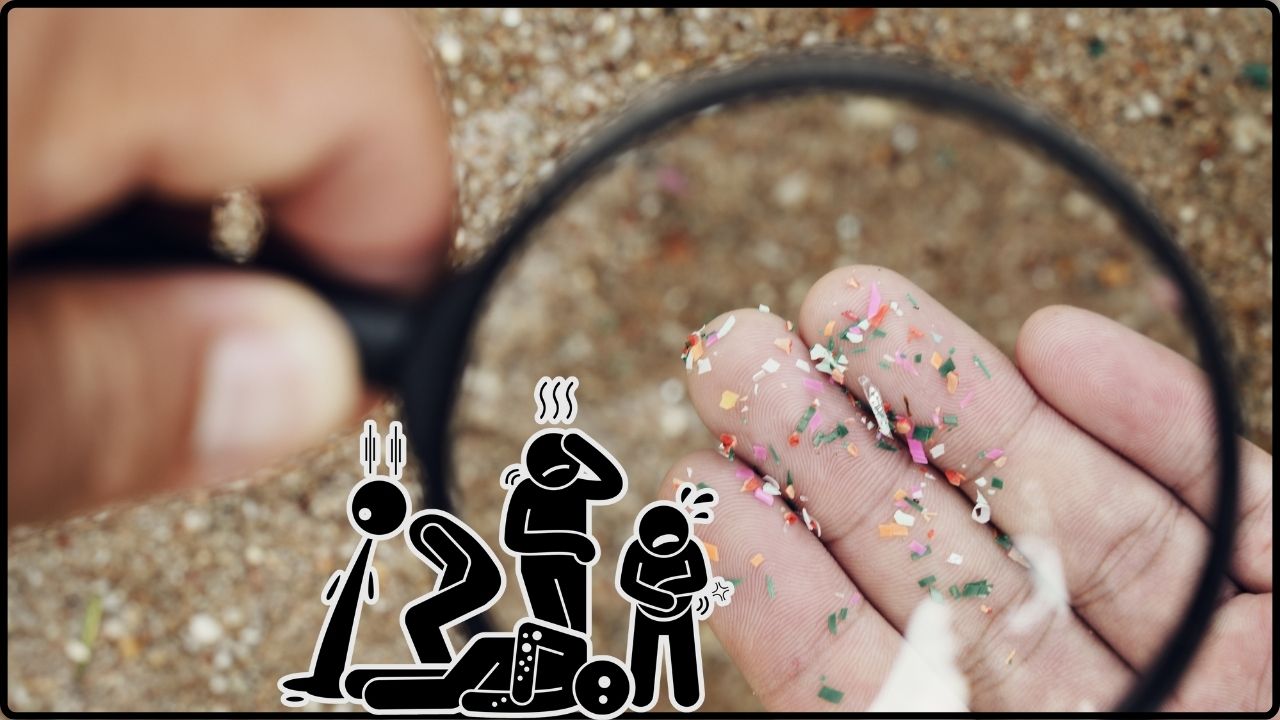Breakthrough in Cholesterol and Cancer Research: A breakthrough in Cholesterol and Cancer Research is getting major attention across hospitals, research centers, and health blogs. What we’re finding out is simple and surprising: cholesterol is not just a heart risk—it might also be helping cancer cells hide and survive treatments. Imagine tumor cells with a shield made from fat—that’s exactly what scientists are seeing. Even kids can get this: “If cancer puts on a butter shield, doctors need to slide it off.” But this discovery is sparking big conversations among adult experts—oncologists, researchers, even policy makers—because it could change the future of cancer care.
Cholesterol has long been linked to clogged arteries, heart attacks, and strokes. But new studies show it may also play a crucial role in cancer. Research into cholesterol-lowering medicines—like statins and fenofibrate—suggests they may double as anti-cancer agents. That means everyday pills could perform double-duty: protecting the heart and fighting cancer. For professionals, that’s a serious paradigm shift in treatment strategies.
Breakthrough in Cholesterol and Cancer Research
The emerging link between cholesterol and cancer is a potential game-changer. Discovering that tumors might wear “cholesterol shields” means treatment resistance may be reversed simply by removing those shields. Research implies statins cut cancer mortality by over 60% in leukemia and lower solid tumor incidence, while fenofibrate shows early promise in fighting HPV+ cancers.
Next-gen lipid-lowering tools—PCSK9 inhibitors, CETP blockers, bempedoic acid—offer even more options. When paired with advancements in biomarkers, personalized treatment becomes possible. Global health benefits from low cost and widespread accessibility. But we need clinical trials, safety monitoring, and regulatory approval before building new guidelines. Expert-to-expert, patient-to-patient, this is smart medicine—simple pills, reimagined. Stay informed, stay healthy—and stay hopeful.

| Highlight | Details & Professional Data |
|---|---|
| Tumor Cholesterol Armor | Cholesterol in tumor cell membranes boosts resistance to hyperthermia and radiation therapies. |
| Statins & Cancer Mortality | Chronic lymphocytic leukemia (CLL/SLL) patients on statins had a 61% lower cancer‑specific death, 38% lower total death . |
| Statins & Cancer Incidence | Statin users showed a 28% reduced overall cancer incidence, 65% in liver, 56% in colon cancers . |
| Fenofibrate in HPV+ Cancer Trials | Early data shows fenofibrate restoring p53 pathways in HPV+ cervical and head/neck tumors . |
| Next‑Gen Lipid Agents in View | PCSK9 inhibitors, CETP inhibitors, and bempedoic acid now under consideration for cancer therapy . |
| Global Health & Equity Impact | Generic statins and fenofibrate cost pennies per dose, potentially expanding access in low-resource settings. |
| Research & Trials Roadmap | Planned Phase II/III trials, biomarker validation, EHR-driven studies, and combination therapy plans underway. |
| Official Resources | See American Cancer Society for reliable updates. |
1. Tumor Cholesterol Armor: A Hidden Shield
Tumors may load cell membranes with cholesterol to become resistant to treatment. Preclinical studies using heat-based treatment (hyperthermia) and radiation showed that cholesterol-rich tumors survived better. When researchers stripped the cholesterol away, results were astonishing: tumor cells were no match for the treatment and died. This explains why heat therapy sometimes fails—and suggests a new method: target cholesterol first, then attack.

2. Statins: More Than Heart Protectors
2.1 Blood Cancer Breakthrough
In chronic lymphocytic leukemia and small lymphocytic lymphoma, patients who were on statins had a 61% reduction in cancer-related deaths and 38% lower all‑cause mortality, even when accounting for age, stage, and other treatments . That’s not small potatoes—it suggests statins may tip the odds in patients’ favor.
2.2 Benefits in Solid Tumors
Large observational cohort studies (covering tens of thousands of participants) show statin users had:
- 28% lower overall cancer incidence
- 65% lower liver cancer
- 56% lower colon cancer
It’s rare to see such consistent trends across so many data sets .
2.3 How Do Statins Work in Cancer?
- They disrupt the mevalonate pathway, essential for cell membrane stability and growth.
- They block MACC1, a metastasis gene, reducing spread in colon and gastric cancers .
- They have anti-inflammatory effects, which is important because inflammation fuels many tumors. For example, pitavastatin reduced inflammation-driven pancreatic growth in lab models .
2.4 Side Effects to Keep in Mind
Common side effects include:
- Muscle aches (myalgia)
- Mild liver enzyme elevations
- Slightly increased risk of type 2 diabetes
- Rarely, memory issues or neuropathy
When prescribing for possible cancer protection, these need evaluation—especially in long-term use.
3. Fenofibrate: A Surprising Cancer Ally
Fenofibrate, widely used to lower triglycerides, is now part of clinical trials for HPV-positive cervical and head/neck cancers. In animal studies, it reactivated p53, a critical tumor-suppressor gene, effectively boosting tumor-killing activity similar to platinum drugs . Human trials began in early 2025. Results are expected mid-2026, with experts eyeing it as a low-cost adjunct therapy.
4. Next-Gen Cholesterol Drugs: New Hope
PCSK9 Inhibitors (e.g., alirocumab, evolocumab):
These injectables can reduce LDL by ~60%. Gene-editing approaches like VERVE-101 show ~55% LDL reductions too.
CETP Inhibitors (like obicetrapib):
In trials combined with statins, LDL dropped ~51%, HDL jumped 165% .
Bempedoic Acid (Nexletol):
Targets ATP-citrate lyase—another way to lower LDL for statin-intolerant patients .
These are ripe for testing in cancer models—especially tumors with high lipid uptake.

5. Practical Tips: Kid-Simple to Pro-Level
For Kids:
- Eat the rainbow: Bright veggies and fruits keep your body strong.
- Play often: Running, biking, ball games reduce fat and help your cells.
- Talk to adults: If family members have high cholesterol or cancer history, doctors can guide testing early.
For Adults:
- Screen often: Use eHealth portals and EHR systems to monitor lipid levels.
- Lifestyle first: Maintain a heart-healthy diet, exercise 150 mins weekly, quit smoking.
- Stay informed: Read oncology journals like Cancer Research and JCO.
- Choose your meds wisely: Statins plus lifestyle may lower cancer risk; fenofibrate may aid HPV+ tumor cell death.
- Enlist patients: Help patients feel secure—emphasize side effects are rare and effects promising.
- Real-World Monitoring: Use regional EHR to correlate cholesterol treatment with cancer outcomes.
6. Cost, Access & Global Health
Generic statins cost pennies per day in most countries. Fenofibrate is similarly priced. This affordability means even low- and middle-income countries could benefit. Compared to expensive chemotherapy or biologic agents, repurposing these drugs could reduce global disparities in cancer care.
However:
- Infrastructure is needed for routine lipid monitoring.
- Safety monitoring (liver function tests, muscle exams) can be challenging in low-resource settings.
- Global clinical trials should include diverse populations to ensure treatments work across ethnicities and health systems.
7. Biomarker Science: Targeting the Right Patients
Not every tumor will respond the same. That’s where biomarkers—like cholesterol uptake receptors or PCSK9 expression—help personalize treatment. Ongoing research is looking into:
- Which cancers show high cellular cholesterol uptake?
- Which tumors have overactive mevalonate pathways?
- Can we create a quick test to classify tumors by cholesterol metabolism?
Identifying patients who would benefit the most will be key in designing efficient clinical trials and treatments.

8. Real-World and Genetic Studies on Breakthrough in Cholesterol and Cancer Research
Large biobanks—like the UK Biobank—track patient health and treatment history over decades. Observational studies leveraging them could look for correlations between statin use and lower future cancer rates. Genetic studies are also revealing more:
- Variations in genes related to cholesterol metabolism (like PCSK9, CETP) seem to modify cancer risk.
- Mendelian randomization studies suggest genetically lower LDL may reduce certain cancer risks—though evidence is mixed.
These findings are early-stage, but help direct where trials should go next.
9. Patient Perspective: Real Stories
One mid-50s woman with Stage II colon cancer joined a study where she took a statin during chemotherapy. She says:
“I’m no scientist, but I felt stronger, my liver numbers stayed good, and two years later—no tumor recurrence.”
That’s anecdotal, of course—but paired with statistics, it makes these findings more real to patients and clinicians alike.
Not Diet, Not Genes—This 102-Year-Old Doctor Reveals the Real Longevity Killer
Not Gold, Not Copper—Egyptians Used Iron From Space in Sacred Objects, New Study Reveals
Sustainable Education: How Schools Are Integrating Environmental Awareness into the Curriculum
10. What’s On The Horizon?
The research community is actively pursuing:
- Phase II/III trials: Statin + chemo, fenofibrate + radiation, etc.
- Drug synergies: Combine statins with immunotherapy or MET inhibitors.
- Genetic interventions: PCSK9 gene therapies in animal cancer models.
- Biomarker trials: Measure cholesterol uptake via PET imaging, correlate with outcomes.
- Data-driven validation: EHR- and claims-based cohort studies confirming statin-cancer links.
Most studies are scheduled for completion by 2027–2028. If results are positive, guidelines could shift by 2029–2030.











